Reflecting on 11 years of side projects
There's this one particular type of articles I truly enjoy reading and consider the most valuable. It's the one that compresses the time and brings years of experience and learnings in minutes of thoughtful reading.
I have collected 11 years of working on side projects and have come to realize there are recurring themes and lessons to be learned. So I decided to share my compressed decade overview in this 15-20-minute read.
My motivation for side projects
There are several reasons I’ve always been into building something of my own:
- even though the products I work on at Google might serve more users my product will bring more sense of accomplishment
- while I do learn a lot at work, I learn even more and meet amazing people via my product
- working on something of my own gives me energy and motivation to accomplish even more at work
- working on your project makes you constantly leave comfort zone (which is good, if you’re wondering)
- not to mention the fact that should the side project be successful the reward might be larger than stock and salary combined
Without further ado, you’ll find all of my side projects in the last 11 years in chronological order below. Bear in mind dates are approximate and the projects overlapped. Although it’s tricky to remember now, I’ll do my best to recover the specifics of what worked and where I failed.
PlayBluRay (2009-2010)
Blu-Ray disk rental service (think Netflix for Blu-Ray)
When I think of this adventure now, in hindsight I realize this has been one of the boldest ideas I’ve ever tackled, even though it was the first side project I had.
Think of it as old-days Netflix CD rental, but with a sole focus on Blu-Ray disks, which back then just became the thing. I was having a beer with a friend of mine. We were discussing how sick Blu-Ray movie quality is, but the disk prices are terribly high. The logical decision was to search for rental services — which we didn’t find. Snap, and we had a business idea!
Young as we were we did almost everything ourselves: I bootstrapped the website, found a Blu-Ray wholesaler in Moscow, my business partner started looking for clients. I’m not sure how long it took us, but it feels like we were ready in no time (a couple of months maybe?).
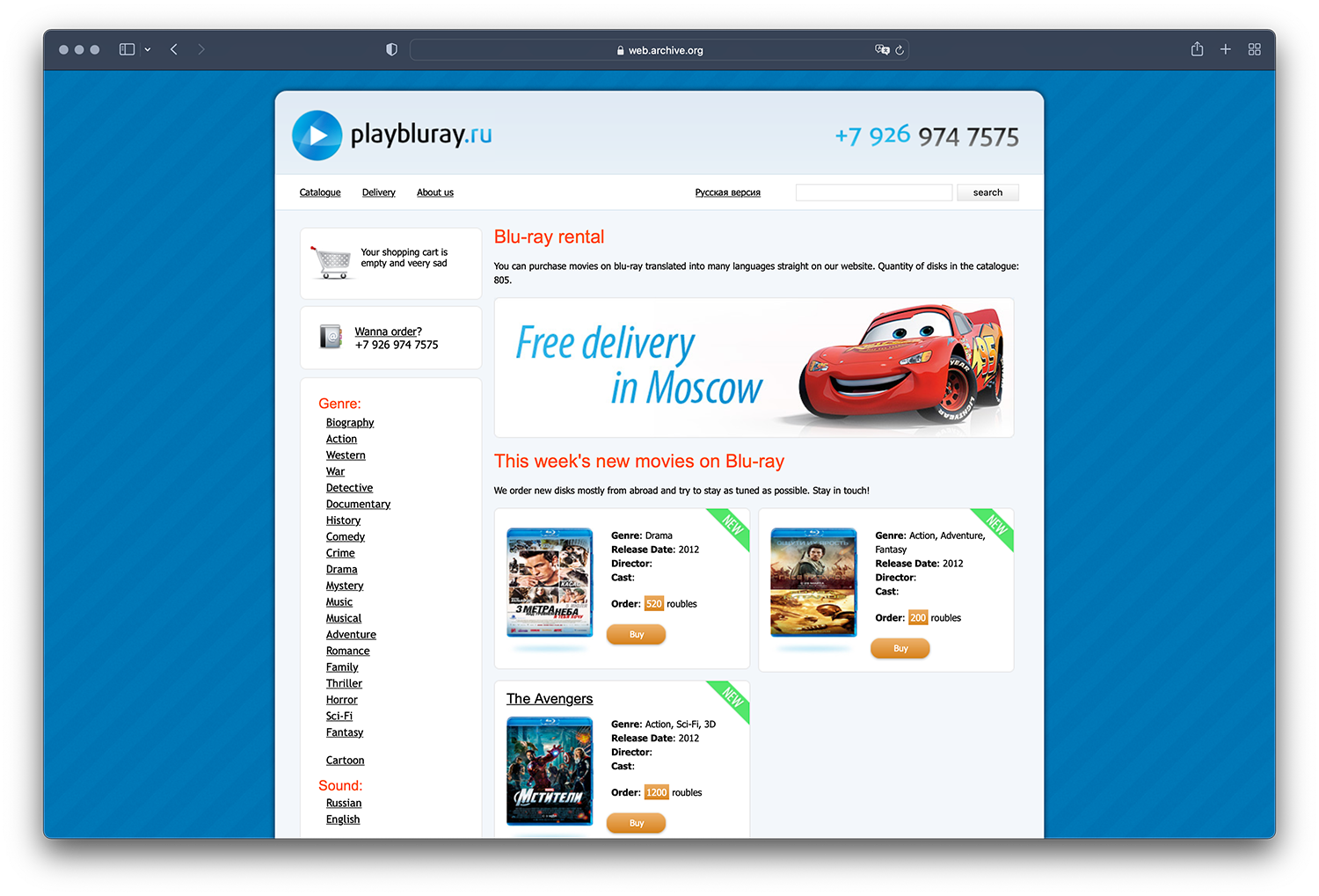
What went well:
- the idea was spot on
- MVP was out fast and initial traction was very promising
- the infrastructure part was well-prepared (suppliers, catalog relevance, pricing, etc.)
Where I failed:
- no user interviews were carried out beforehand
- by the time the market matured, we had already given up
- missing P&L analysis and high costs taking their toll
- no solid business model in place
- lack of knowledge and network: we could have easily raised $ and built a Russian Netflix back then
Ceramity (2011-2012)
Global ceramic tile directory
Sometime in 2007-2009, I had experience working with ceramic tile. I joined one of the Italian ceramic tile importers AGAT ceramica to build an online store, which opened up a whole new world for me. The market was a mess, as it was for most construction materials. In general, I have a burning desire to organize information for others to use.
Together with my developer friend Denis we decided to give it a try and see if it plays out. I guess we didn’t have a clear vision in mind and the whole thing faded without being fully launched. Damn, this does still look like a great idea to me.
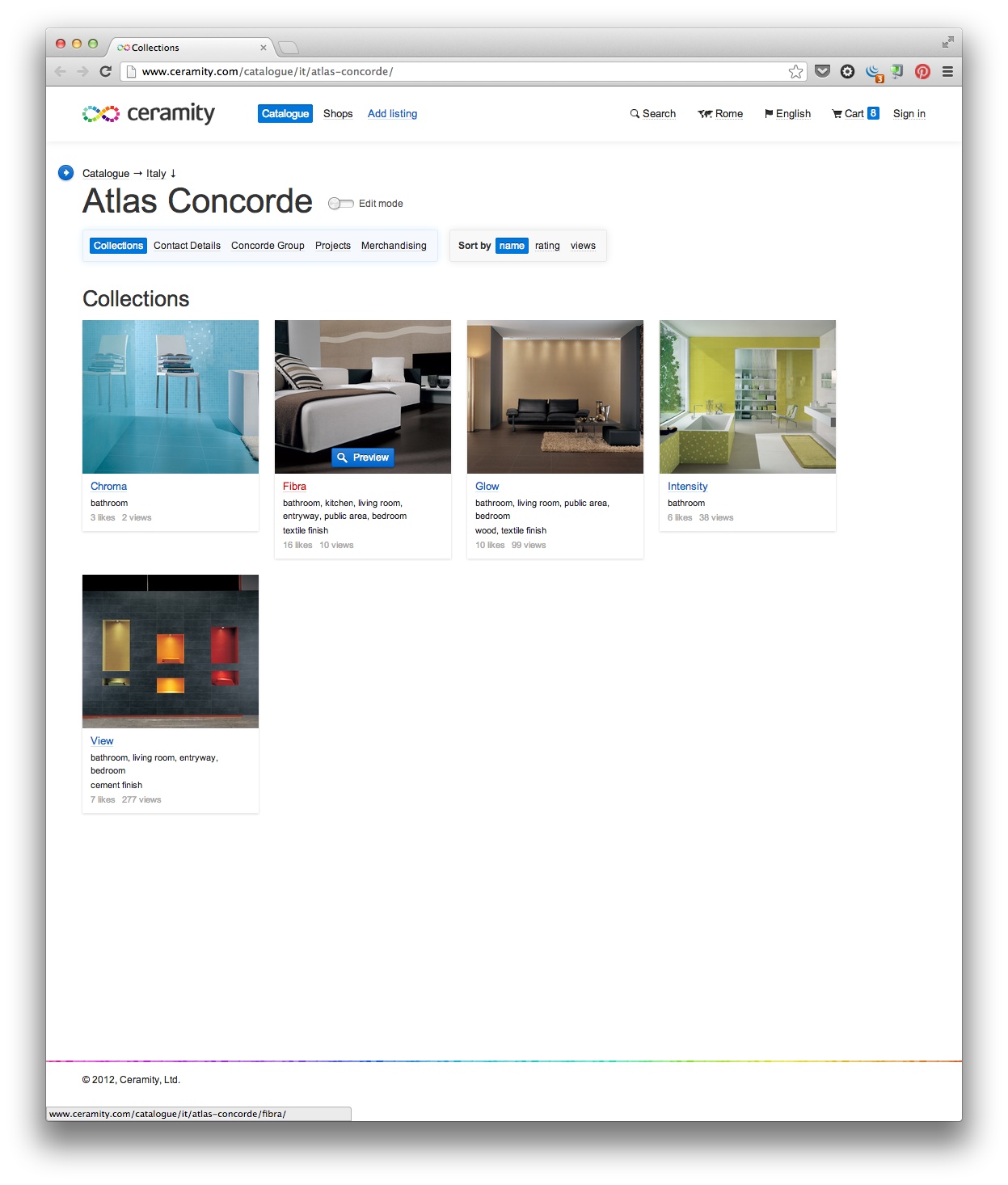
What went well:
- smooth collaboration (thanks to years of working together)
- bold ‘fake it till you make it’ approach – I started emailing tile factories right away without rolling out an MVP
Where I failed:
- despite MVP being ready and functional we were hesitant to do a full launch
- too much focus on perfecting the product
- no user research at all – we had a vague notion of where we were going with this
SEM Travel (2012-2015)
Health-focused leisure travel
Back in 2005 I joined the advertising agency to work as a designer and met this guy Sasha (short for Alexander in Russian, hence the company name Sasha + EMil Travel). At some point, he started ordering freelance jobs. We eventually became friends. Sasha used to have lots of simultaneous projects and he was well connected with medical wellness houses. Their main audience was elderly people and the main sales channel was old-school travel agencies.
We came up with a simple idea of creating a template-based website for each wellness house and earning a revenue share from clients that book through us. By 2015 we had ~15 websites, I think, each paying 10% rev share. Not the most brilliant idea, I must admit, but it worked and was making money.
Unfortunately, it was becoming more difficult to manage and we didn’t have quite much transparency in our processes and I eventually left.
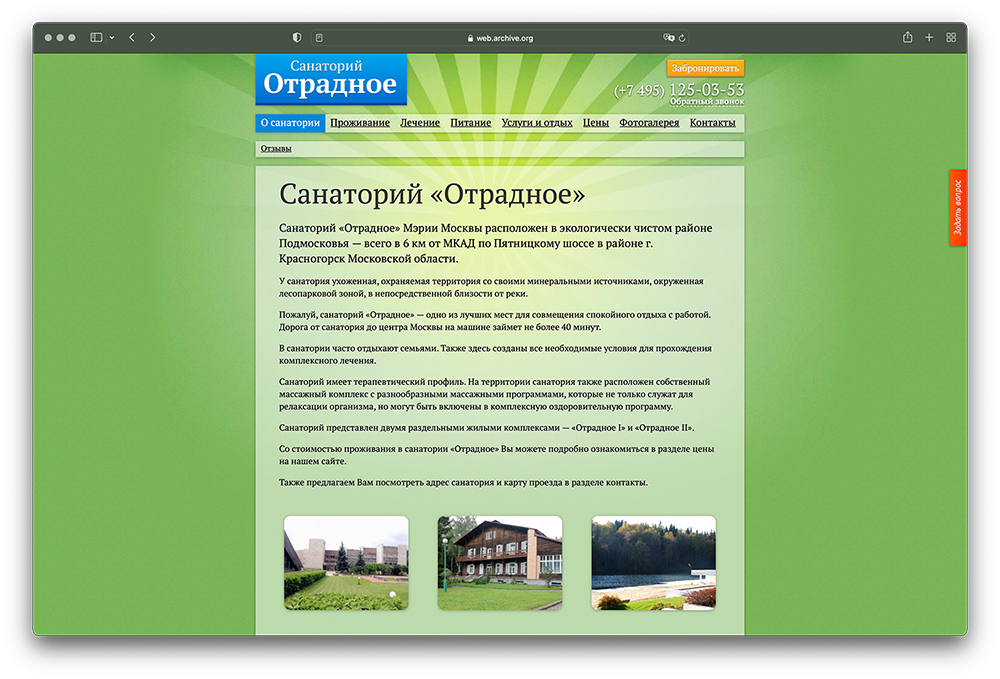
What went well:
- very fast deployment of websites and super high productivity
- immediate user acquisition
Where I failed:
- proper tracking of analytics, user behavior, etc.
- no user research prior to the launch
- lack of transparency in processes and payments with the business partner
- very rare P&L analysis which surfaced low outcomes, high costs, complex structure
Platkoff (2013-2015)
Designer scarves e-commerce
Since I already had experience with e-commerce both with my previous employers, freelance customers, and with PlayBluRay, it seemed pretty reasonable to continue working in this direction. A potential client reached out to me via recommendation and asked to help build an online wholesale portal for their scarf-selling business.
Having started working on this freelance task I quickly understood they have retail potential as well and proposed I build one and we work together. I would be managing the online part (web, advertising, acquisition, etc.), they would be managing the offline (delivery, stock, etc.). We shook hands and kicked off!
We had amazing traction and great results, but when I did a proper analysis after 1.5-2 years I realized I was hardly profitable. Bummer.
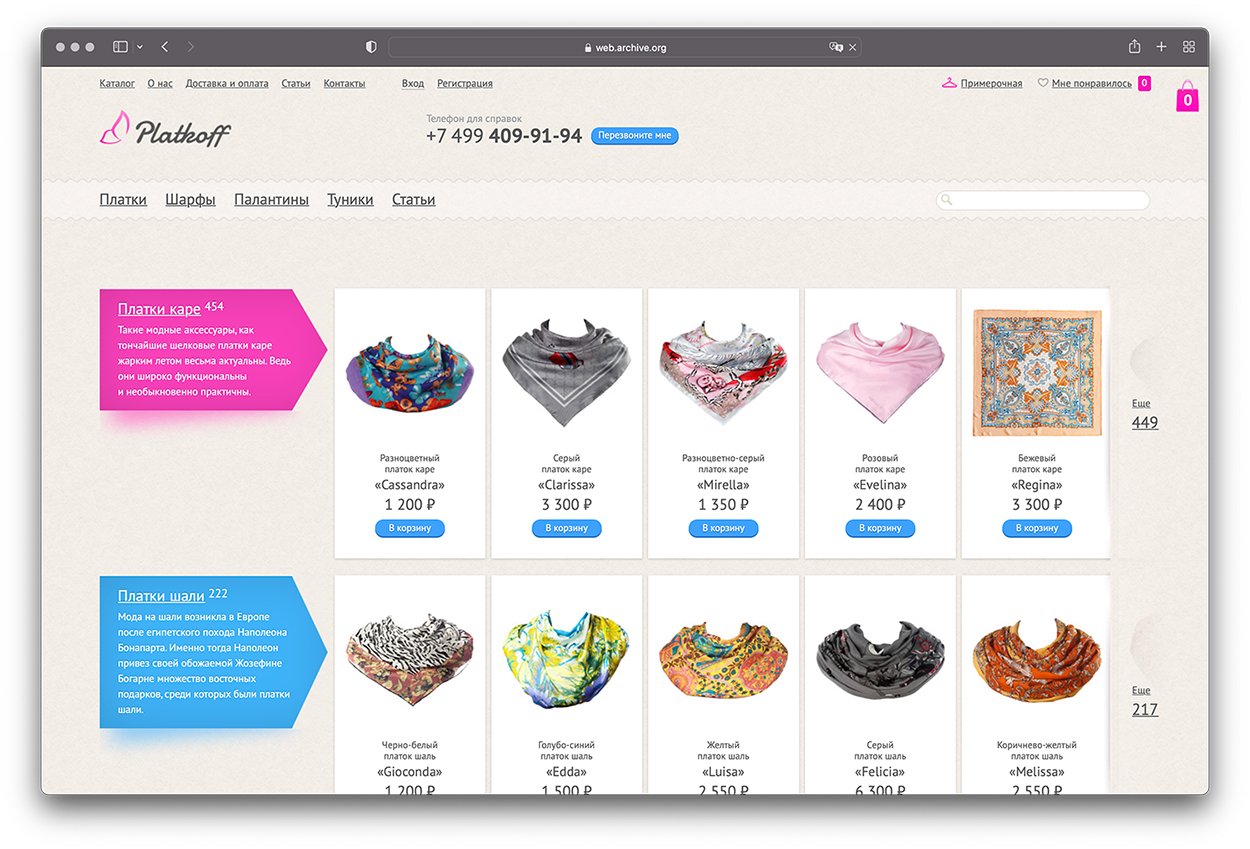
What went well:
- reasonable business model
- fast implementation despite the size of the catalog
Where I failed:
- lack of background market research
- lack of proper analytics tracking
- no P&L analysis for too long (turns out you can be losing money in the long run)
Outletaholic (2014-Present)
Worldwide outlet shopping directory
This one is actually the only one that became profitable and is still bringing money. The secret behind it might be that I was trying to solve my own problem. At the time I used to travel to Italy to do outlet shopping. Finding outlets was not just challenging, it was a lottery.
So I started looking for some online solutions, which I found – several for the US and a couple of really crappy ones for Europe. The best option for Europe was actually a physical book which I immediately purchased.
I quickly pitched the idea to Denis (we did a lot of work together as freelancers and partners by now) and he was keen to try it out. We quickly developed a website and added the outlets and malls that we could parse online. Then hard work began: I had to find outlets and malls to be added manually, hire freelancers from all over the world, and had them fill the information in. We integrated Google AdSense and didn’t do much ever since. I tried keeping the website up to date with the help of freelancers, but without much luck.
It took several years before it started making some real money (around $30k in total so far), but I didn’t mind as I was already focused on other things. What’s cool about it is I was and still am reinvesting the income from Outletaholic to other projects of mine.
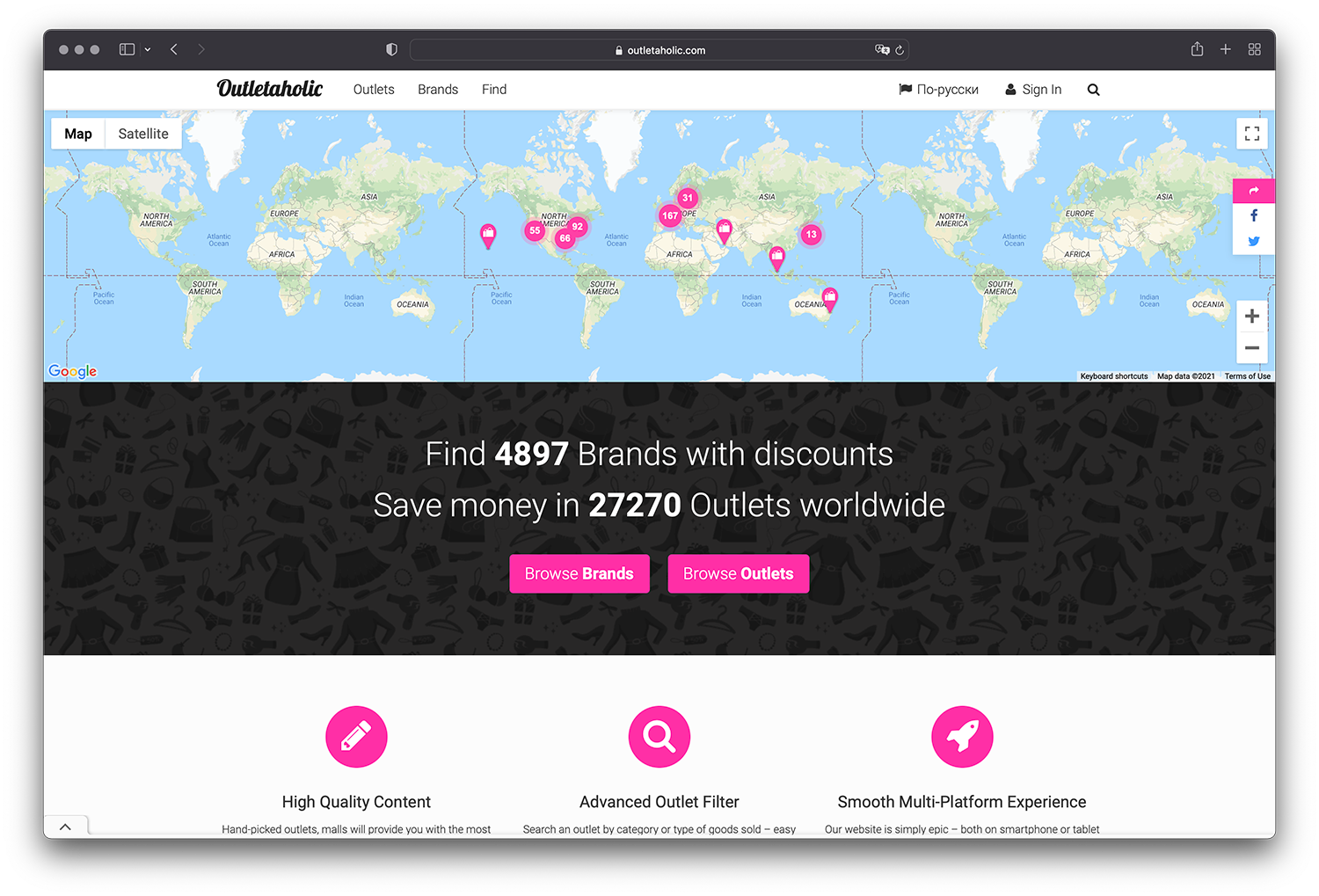
What went well:
- this was my own problem and I was trying to resolve it – best scenario usually
- MVP was out fast and initial traction was very promising
- the infrastructure part was well worked-through (suppliers, catalog relevance, pricing, etc.)
Where I failed:
- use of an outdated CMS instead of the more scalable one (limits the development of the product now)
- lack of focus and proper business plan – Outletaholic can be making 10-50x of what it’s making now
WashWash (2014)
Data-driven car wash
This by far is the most expensive lesson I’ve had in the history of my project. I had been playing with the idea of having a brick-and-mortar business for some time. At some point, my good friend told me his brother has invested in a carwash along with his long-time business partner. The problem was they didn’t know much about what to do, so I decided to give it a try and become their partner.
What started off as the leap of faith into partners’ decency and the project’s potential ended up being a miserable failure. Things started piling up after I discovered that the business partners didn’t share the plans on the enclosing road which was about to close. On top of that, we started investing heavily into repairing the interior and customer acquisition (online & offline) which was quite pricey. The last drop was dealing with systematic lies and theft from staff.
All in all, this was a tough but very useful experience that taught me a lot about people, specifics of the brick-and-mortar business, dealing with government entities, and so on. I’m grateful it ended quite fast.
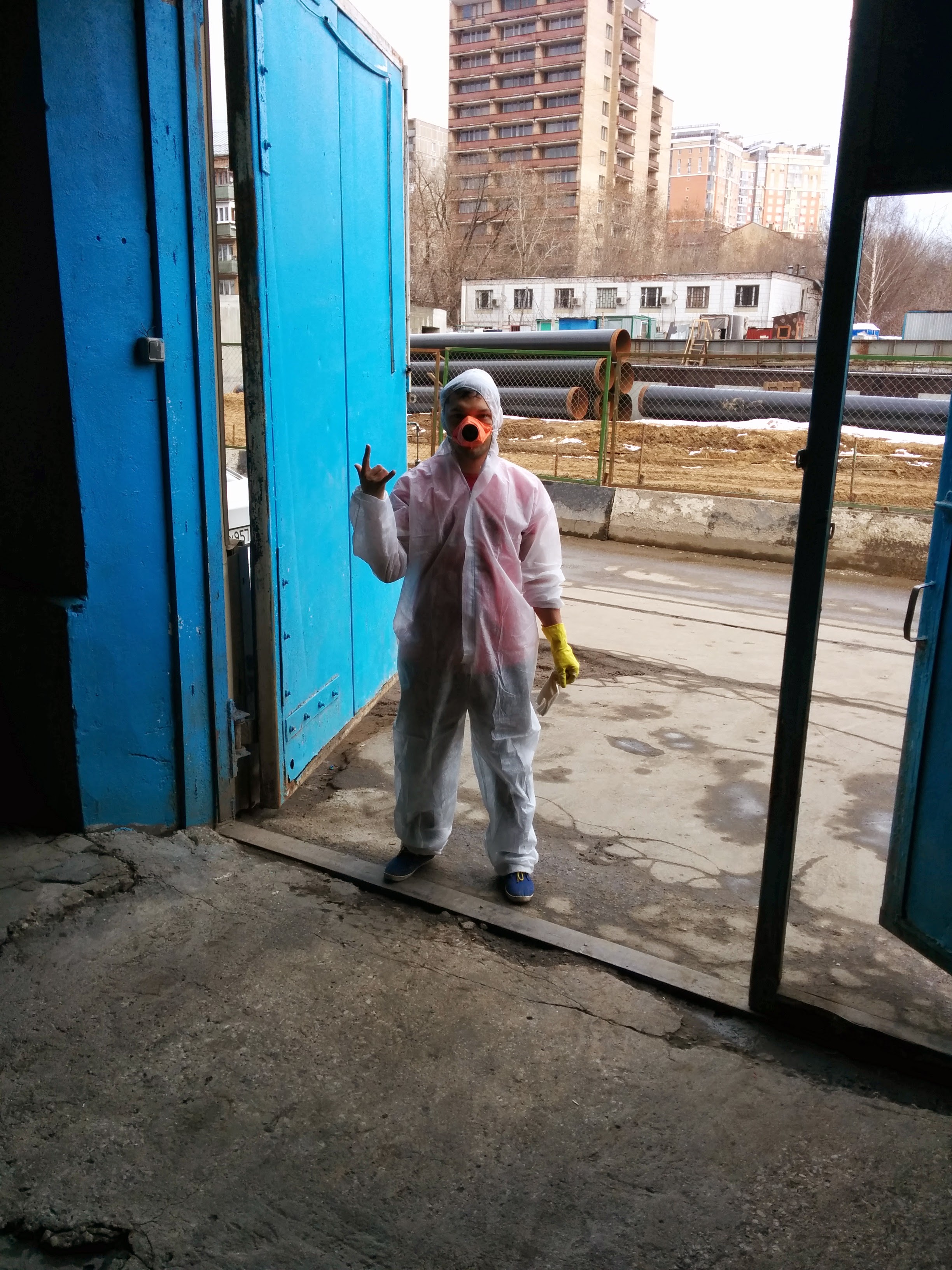
What went well:
- great knowledge curve in the new area
Where I failed:
- experience or help doing offline business would’ve made fewer costly mistakes
- lack of deep knowledge of human nature (specific stratum: people steal, lie, and a lot more)
- no background check on business partners
- no transparency between partners
WODsAPP (2015-2016)
Instagram for CrossFit junkies (like me)
I’ve been into CrossFit for 4 years up until this and I’ve been changing apps to track my workouts every other month. What I ended up doing is just keeping them on the long note on my iPhone.
You might remember I have this desire to organize information and I was thinking of doing this for my CrossFit needs. What I actually wanted to do is make my workouts analyzable, meaning seeing how each exercise of the workout impacts my body. This is quite some task to accomplish — you’ll see this recurring in one more project later.
I approached another CF junkie in the office and discussed the idea with him. He simplified it to an Instagram-like feed right away and we decided to give it a try. Since we needed the developer we inquired about our friends and found a guy. He was rumored to be good, so we started off. But the first thing he inquired is we create a legal entity and make everything formal. To cut a long story short we went through this whole process just to split up after several months with a legal entity at hand.
I asked my wife’s 16-year-old bright developer cousin to help us out with the development and he agreed. Even though he is super talented and capable mobile development was too new to him. We ended up trying to come up with our first proper build for ~1.5 years. In the end, we gave up on the initiative without fully launching it.
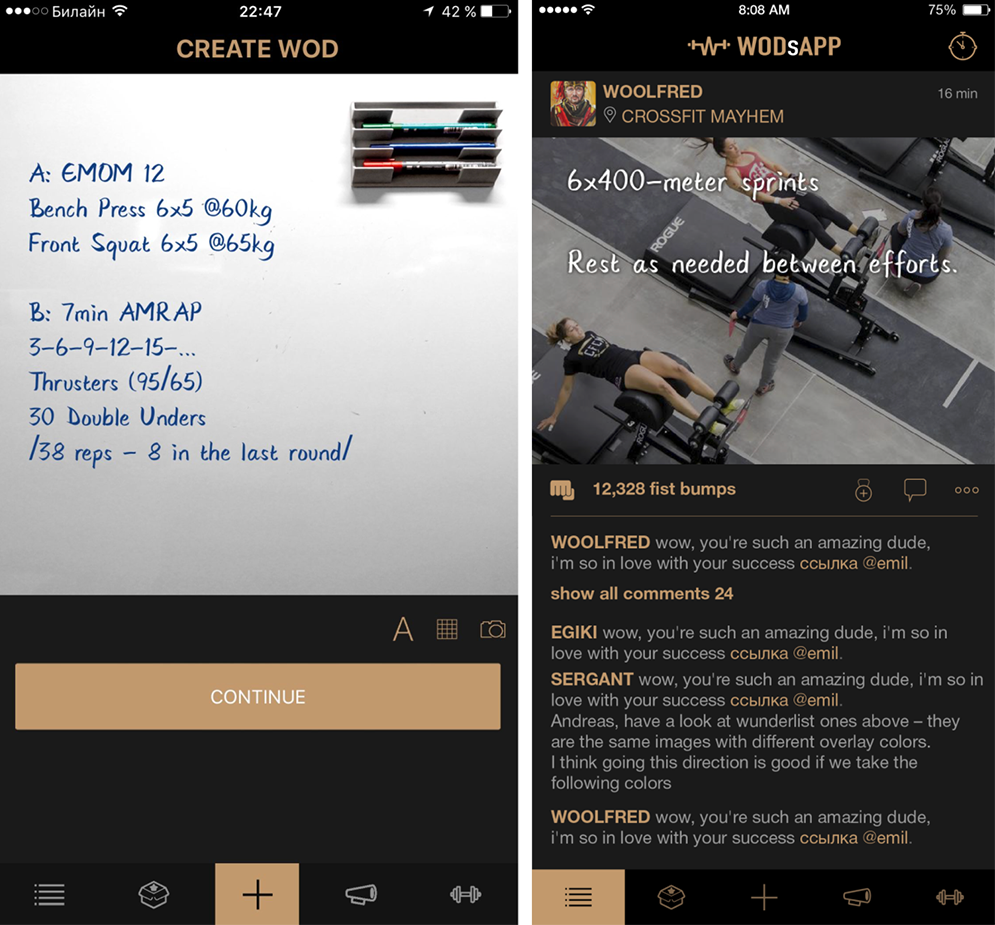
What went well:
- same as Outletaholic, I was working on my own problem
- initial user feedback in the community was positive
Where I failed:
- lack of experience in mobile development and management
- as a result no MVP out on the market for more than a year (too long)
- too much focus on perfecting the product
- lack of knowledge of the startup building approach, lean methodology, etc.
Mindfulness Chat (2019)
Mindfulness chatbot
I always wanted to dig deeper into chatbots and this was my first attempt. I have been keeping this daily gratitude journal and decided it might be handier to do this digitally. Since I was using messengers like Telegram and FB Messenger daily, I decided this is the one.
I quickly found a developer who helped me out and the product was ready within a couple of weeks. While it was more convenient than the physical notebook, I gathered user feedback and realized the user experience was suboptimal. Having learned my share, I let it go.
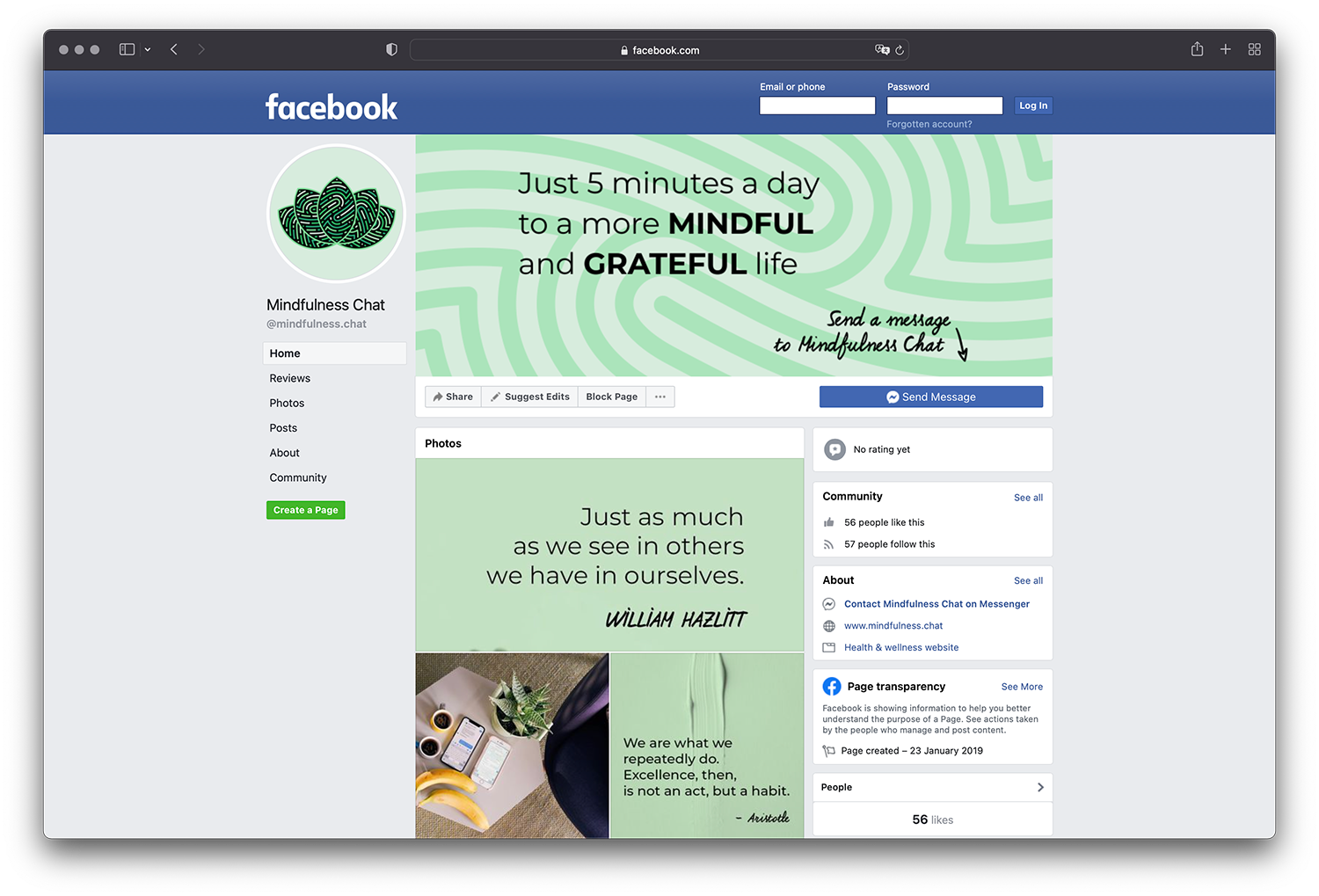
What went well:
- very fast MVP out on the market
- fast learning curve
Where I failed:
- no user interviews / custdev carried out beforehand, no iteration
- lack of clear goal and vision beforehand
Gymmy – AI Fitness Chatbot (2020)
Lockdown-borne fitness chatbot
This one was born during lockdown when all gyms and outside training areas were closed. I am really into sports and I needed a way to continue training. Having discussed that with my coach I started doing workouts at home. Turned out you can train almost without any equipment and stay in great shape.
Sport helps you stay not only in physical but also emotional & mental shape. COVID hit hard on the emotional side of a lot of people and friends of mine. What I decided I’d like to do is share the workout routines that the coach created with others for free. The fastest route was naturally a chatbot, so we created one!
The idea I had here was way deeper than just coming up with workouts. I wanted to see how each workout impacted my muscles so that I could analyze it afterward. Seeing this kind of analysis helped our algorithm come up with recommendations for further exercises depending on the user’s goal. We saw some early traction, but the experience was too new for users and I came up with something bigger during this project, so we sunset it after several months.
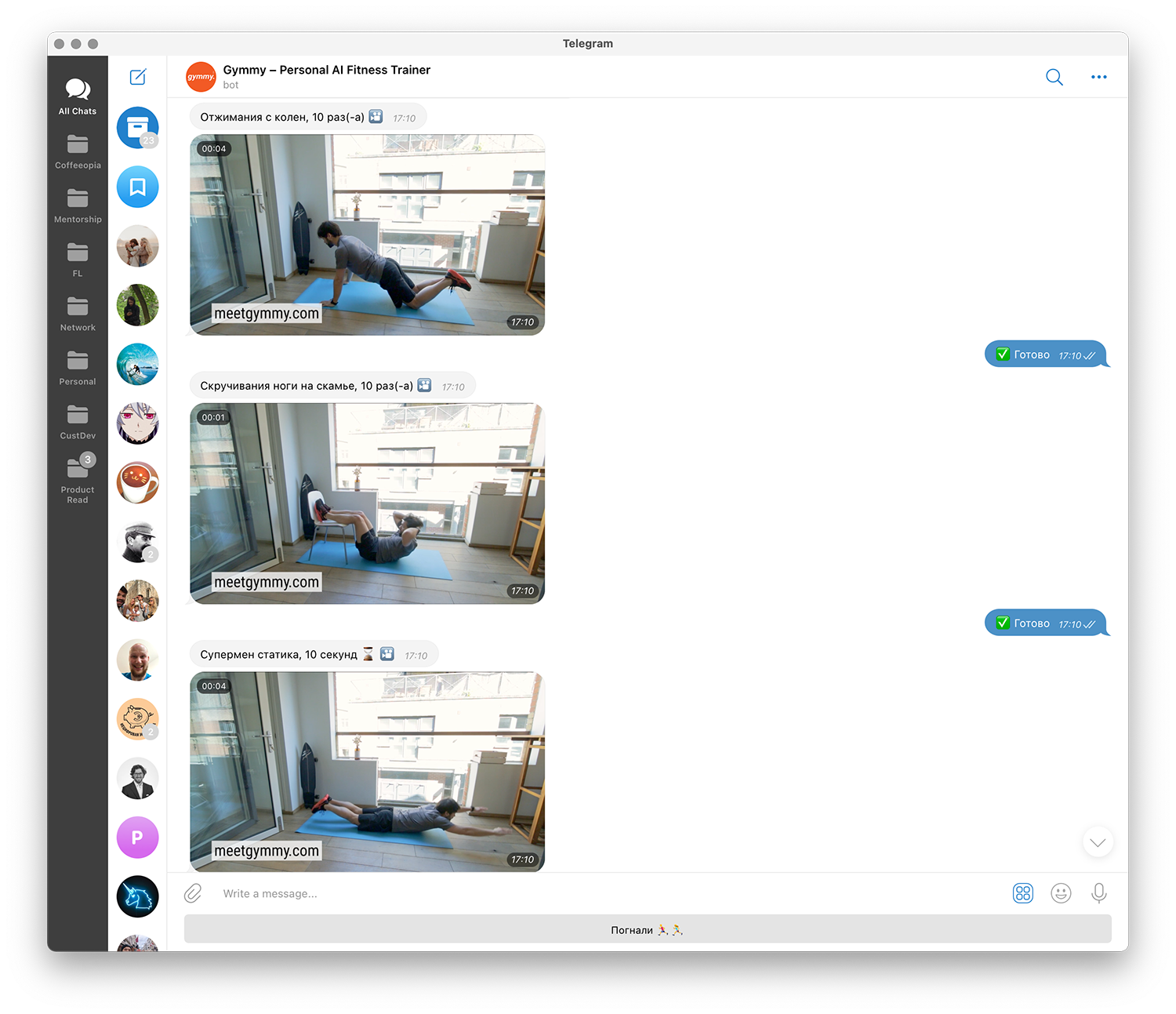
What went well:
- very fast MVP out on the market
- great learnings on the go
Where I failed:
- no user interviews/customer development (custdev) carried out beforehand
- lack of full commitment
- lack of clear goal and vision beforehand
Putting recurring themes into action
If you skim through the projects above you’ll notice there are several recurring themes that have come up:
- lack of a clear goal or vision (all projects)
- not carrying out user interviews/customer development beforehand (all projects)
- too slow to release MVP out on the market (WODsAPP, Ceramity)
- not carrying out P&L analysis on a periodic basis (Platkoff, SEM Travel, PlayBluRay)
- lack of transparency between business partners (WashWash, SEM Travel)
I’ve taken some time to analyze the recurring themes and come up with a few lessons to keep in mind. I hope some of you into side projects might find these useful.
Lesson 0: Side project without a goal is worthless
The majority of my side project started off with a vague goal of ‘doing something cool’. Well, that doesn’t quite work out in real life. What did work out though was learning something new while building new products. I had it in mind as the secondary goal at the time, a ‘good-to-have’ type. Eventually, I realized that learning something new can be a great goal by itself, that’s how the chatbot prototypes of Mindfulness Chat and Gymmy Fitness Bot came to life. I don’t regret a minute spent on those as I learned a lot along the way: how chatbots work, zero-coding chatbots, driving traffic, specifics of user interactions, events tracking, and so on.
When it comes to building something big, do take your time and think where you want to head with your side project, what outcomes are possible, and what’s the preferred one. Having this goal in mind will help you along the way in both hard and good times.
Lesson 1: The best products don’t get built in a vacuum
This is the painful one. People usually don’t like being proven wrong or being criticized (that used to be and is still sometimes me) and having your ideas criticized feels bad. Nonetheless, this is the only thing that will help you build something people want (as well as lesson #2 below).
To be honest, I did not know much about custdev and user research prior to digging into product management. Hell, I didn’t know it was called product management at the time, I was just doing it thinking I was building stuff. So it goes without saying that I skipped this step in 90% of all products I’ve done. One eventually did take up just thanks to pure luck — with Outletaholic I hit the nerve of those wishing to do outlet shopping and looking for a place to do so. But again this was pure luck.
If you don’t know where to start – start with ‘The Mom Test’. It’s very simple and straightforward. I wish I knew more about user interviews 7-10 years ago. Do as many user interviews as you can and keep on doing them as you go. This way you’ll be able to find out more user needs as you go and pivot if needed.
Don’t be afraid to let your idea go at this stage. It’s hard but it’s the right thing to do. The faster you realize this and switch to something new, the better.
Lesson 2: Development speed is everything
I did read all the books on lean startup and how it’s important to ship fast. What I didn’t realize is it’s literally the fastest version of the product (also called MVP – minimum viable product) that should be out there. I kept thinking we’re not ready yet, we should do a better version of our product first. Not. Just ship whatever works to test your hypothesis, even if it’s just a spreadsheet, a form, and an email to a prospective customer.
This is actually harder than it sounds. You tend to think that the user won’t get it if you just ship the rough version of your product and you keep building it. Shipping something fast gives you the advantage of being able to see users’ reactions, sentiments right away. You can’t get that on the user interview, so do use the MVP as the source of additional information. Don’t be afraid to let your idea go at this stage as well. Yup, you heard me.
Lesson 3: Commitment is key
There’s a phrase that my surfing coach keeps repeating whenever I surf with him and (for some reason!) don’t take the great wave: “Emil if you don’t commit to the wave, you won’t take it. You might get lucky, but that’s a very rare scenario”. You see, in order to take the wave in surfing you have to apply a lot of effort – both physical and mental. You have to paddle hard, focus on the location, body posture, direction you’re planning to head, and paddle even harder – with the sole goal of riding the wave.
The same applies to building something valuable. If you’ve set out on a journey of creating a product that people will love, you should have a clear vision of where you’re going to and commit fully. You might get lucky and not have to do a lot, but that usually happens only to experienced surfers entrepreneurs.
I noticed the last 2-4 additional paddles in the very end are the difference between failure and success in surfing. Something tells me it’s very similar in startups.
Lesson 4: Get the word out
I’ve been struggling with this one for several personal reasons. Firstly, as I said earlier, I used to be very sensitive to feedback, and getting the word out means facing your biggest fear – getting criticized. What helped a lot is reframing the criticism into actionable feedback and distancing myself from the product. I am not the product I’m building and the feedback can actually help improve it. Secondly, I was worried Google would find out / sue / ban my side project (covered in the very beginning).
Airbnb launched several times and you should too. Get the word out whenever you have something to test on users – even an MVP. There are tons of places you can go with ranging from social networks and launch groups to Product Hunt. This will help gather feedback earlier as well as bring more users to talk to.
Lesson 5: Cover the basics
This sounds generic, but it’s worth noting. Pick the right partner you can trust and be transparent with them and, ideally, have a decent level of transparency with your employees. You’re in it for the long run, so invest in the relationships just like couples do.
One thing I totally missed is going through profit & loss analysis. I thought if the business generates revenue it is (or eventually will be) profitable – didn’t quite turn out to be the case. Take your time and analyze the situation quarterly / semiannually. You’ll discover a lot of interesting things sooner this way.
So what’s next?
A lot of people would have given up at this stage and that’s fair — after all, it’s 11 years of failures. There are lots of articles like this on Hacker News and Indiehackers.
As for me – I’m just getting started. Yeah, it’s been 11 years of ups & downs, but mostly it’s been 11 years of valuable learnings, trial, and error. There’s a great principle in Shawn Achor’s “The Happiness Advantage” called ‘falling up’. Although for obvious reasons I can’t and shouldn’t compare myself to those who went through serious trauma, the principle remains true to what I’m feeling after all these ‘failures’.
I must admit, I am a bit scared to fail again. But I’m actually more excited to apply all the learnings from previous experiences to my next projects. As they say 9 out of 10 startups fail, I've done roughly 9 already, now it's time to move to #10! Since we’re on it, I’m already doing exactly that.
Meet Coffeeopia — the place to discover, review and discuss specialty coffee, roasters and coffee shops. Think of it as Untappd (or Vivino, if you’re into wine) for specialty coffee.

There’s a lot happening with Coffeeopia: we made it to YC S21 interview (top 10%, but didn’t make it to top 5%), pivoted thanks to feedback, became #3 on Product Hunt and a lot more. I’ll be building Coffeeopia in public and sharing all the steps on my Twitter — so give it a follow if you’re interested!
Here’s to another great adventure 🤙

